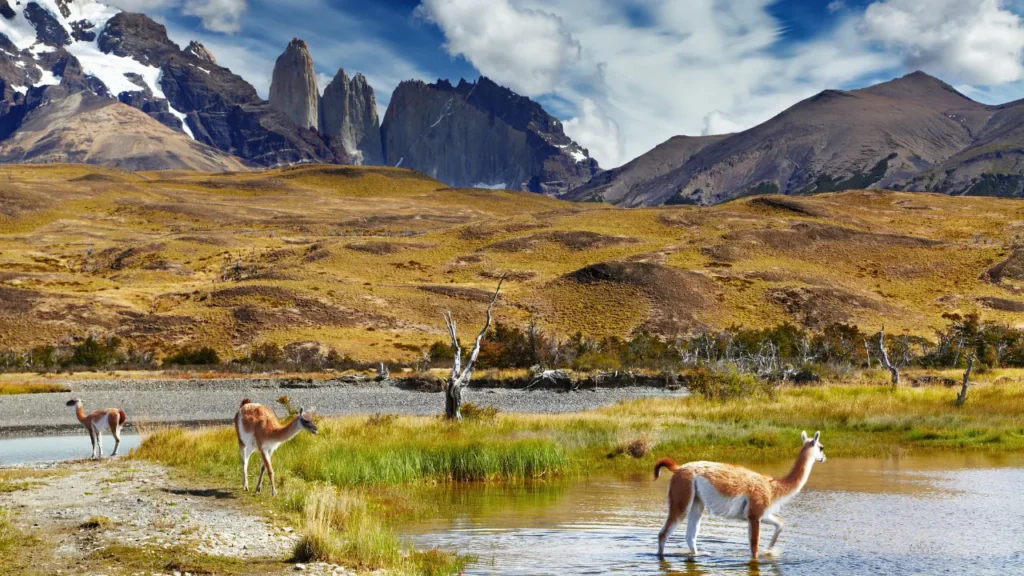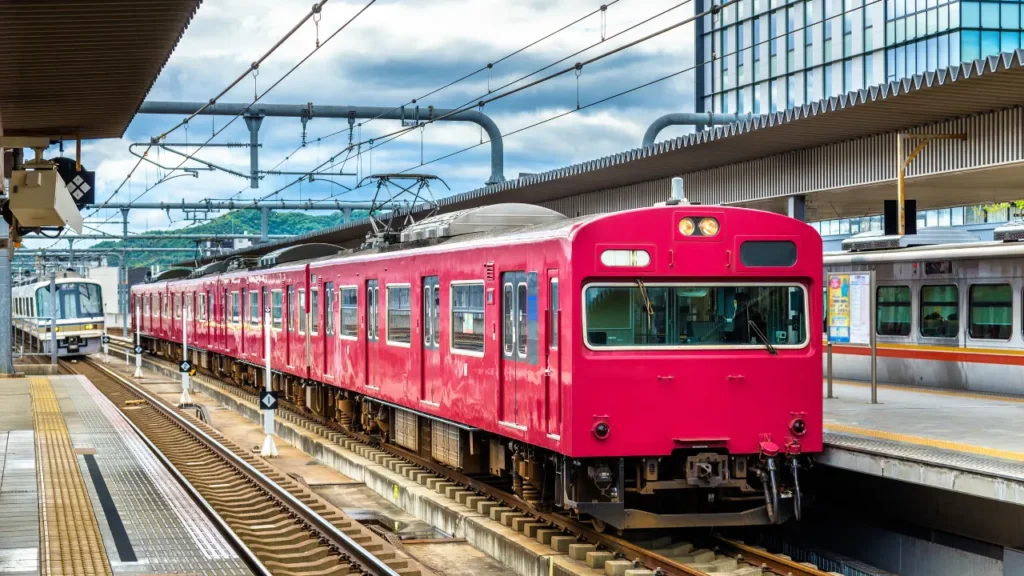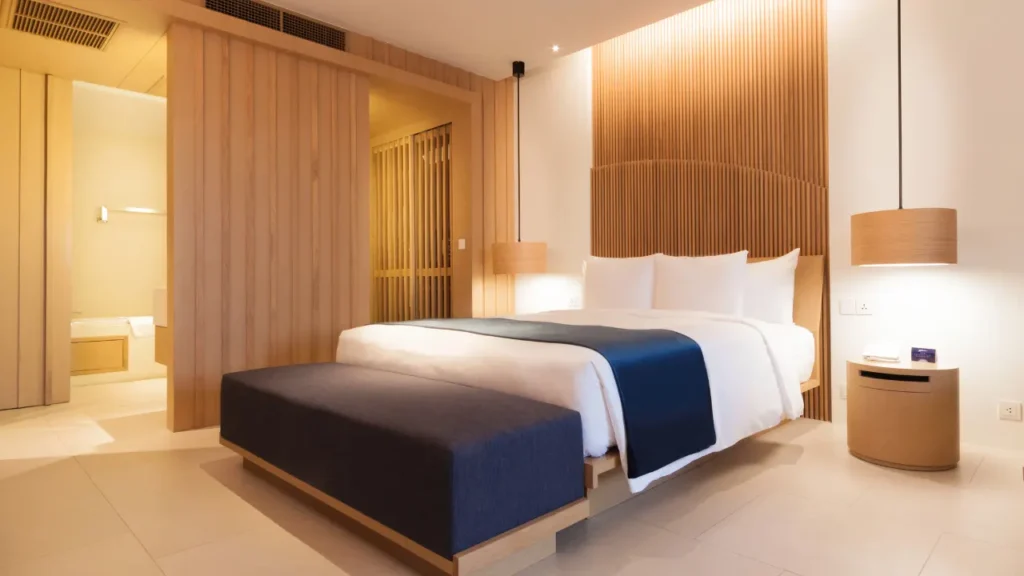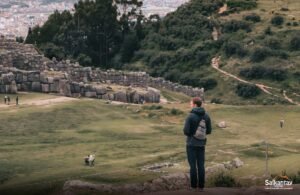The average daily cost for a traveler in Patagonia is roughly $50-$200. Budget types can impact total expenses significantly.
Patagonia, a swath of South America shared by Argentina and Chile, is a destination famed for its stunning landscapes, which include vast steppes, rugged mountains, and glacial fjords. Adventure-seekers and nature lovers flock here, drawn by the immense natural beauty and the array of outdoor activities such as hiking, biking, and kayaking.
Being a remote region, travel costs can vary widely depending on your style of travel. Those who prefer luxury lodges and guided tours will find the higher end of the budget scale, while backpackers staying in hostels and self-catering can keep costs down.
Planning and research are key to managing your budget effectively in this diverse and expansive territory. Always account for the unpredictable weather and remote location, as these factors can also influence your daily expenditure by necessitating special gear or alternate travel arrangements.

Table of Contents
Toggle- Patagonia Travel Expenses Overview
- Understanding Patagonian Seasons
- Packing Essentials And Savings
- Average Daily Costs In Patagonia
- Local Transportation Tactics
- Eating Out And Groceries Guide
- Adventure Activities And Their Costs
- Money-saving Accommodation Tips
- Frequently Asked Questions Of Average Daily Costs In Patagonia
- Conclusion
Patagonia Travel Expenses Overview
Understanding the average daily costs for a trip to Patagonia is crucial for travelers seeking to manage their budget efficiently. The region, known for its breathtaking landscapes and outdoor adventures, can be quite diverse in terms of expenses. Accommodation options range from affordable hostels to luxury hotels, with prices varying significantly based on location and season.
Food expenses can also fluctuate, as dining at local markets proves to be cost-effective, while upscale restaurants will increase your budget. Transportation, including car rentals, buses, and domestic flights, must be factored into the equation. Excursion costs are another consideration, with guided tours and park entry fees impacting the overall expenditure.
Traveling with a clear budget plan ensures a pleasurable experience, as unexpected costs can be mitigated with proper research and preparation. Visitors should anticipate daily variability in spending and consider travel insurance to cover unforeseen expenses. An invaluable adventure awaits in Patagonia, and smart financial planning will make it all the more memorable.
Understanding Patagonian Seasons
The seasonal impact on prices in Patagonia is significant, with tourist demand greatly influencing accommodation and activity costs. Summer months (December to February) see the highest prices due to the pleasant weather and long days, making it a
popular time for outdoor activities. Conversely, winter (June to August) is less expensive, though colder temperatures may limit some adventures. The shoulder seasons (September to November and March to May) strike a balance with moderate prices and fewer tourists, creating a sweet spot for budget travelers.
Travelers looking to stretch their dollars should aim for the shoulder seasons, where the confluence of lower prices and acceptable weather conditions presents the best value. Planning excursions and securing accommodations during these periods can sometimes lead to significant savings, with the added benefit of experiencing Patagonia’s natural beauty without the peak season crowds.
Packing Essentials And Savings
Smart packing can substantially reduce your daily expenses in Patagonia. By opting to rent gear rather than purchasing it, you can not only save money but also minimize luggage. Key items like sleeping bags, tents, and hiking poles are available for rental at numerous outfitters in the region. It’s vital to compare prices and check the quality of the equipment before renting. Patagonia’s climate demands that you come prepared with the right clothing and equipment, yet smart choices in what you pack can mean significant savings.
Certain gear, such as specialized clothing or hiking boots, might be more economical to purchase if you plan on frequent outdoor activities in the future. Nonetheless, for one-time adventurers, rentals provide a cost-effective solution. Ensuring that your backpack contains only what’s necessary will not only lighten your load but also safeguard your budget.
Average Daily Costs In Patagonia
Travelers venturing into the stunning realm of Patagonia need to prepare for a range of daily expenses. Typically, the costs can be segmented into accommodation, food, transportation, and activities. Diverse options mean budgets can vary significantly.
| Expense Category | Cost Range |
|---|---|
| Accommodation | $10 – $100 |
| Food | $15 – $50 |
| Transportation | $20 – $100 |
| Activities | $25 – $200 |
Scaling from budget to luxury, hostels and camping sites offer substantial savings, whereas upscale hotels bring premium comfort at higher rates. Food expenses heavily depend on whether one opts for local eateries or high-end restaurants. Local transportation can be economical, but private tours or car rentals add to the tally. Finally, costs for excursions and tours vary, influenced by exclusivity and duration.

Local Transportation Tactics
Exploring Patagonia can be both exhilarating and cost-efficient with a savvy approach to local transportation. To traverse this rugged region without breaking the bank, it’s essential to understand the pros and cons of public transport and car rental options. Public transport, while generally more affordable, offers limited flexibility in terms of routes and schedules. It’s an excellent choice for popular destinations but might not cater to off-the-beaten-path locations.
On the other hand, renting a car provides the freedom to explore at your own pace. Despite the higher upfront cost, this option could be economical for groups or those planning to cover extensive distances. The key is to weigh the cost against convenience based on your itinerary.
| Transportation Type | Advantages | Disadvantages |
| Public Transport | Lower cost, Eco-friendly | Limited routes, Fixed schedules |
| Car Rental | Flexible, Comprehensive access | Higher cost, Responsibility |
Eating Out And Groceries Guide
Eating out in Patagonia can be a delightful experience but comes with varying price tags. Patrons can expect to pay more for meals at tourist-centric restaurants, often double the price of local eateries. Lunch specials or menú del día offer great value, typically ranging between 10-15 USD.
On the other hand, groceries provide an economical alternative and allow travelers to embrace the local flavors. Visiting local markets and stores could mean substantial savings. A week’s worth of groceries might cost around 50-70 USD, a fraction of the cost of daily restaurant meals.
The key to saving is balancing dining out and preparing meals with fresh, local produce. Tourists discovering the varied landscapes of Patagonia can enjoy both convenience and cuisine diversity without overspending.
Adventure Activities And Their Costs
Patagonia offers a plethora of adventure activities to satisfy the adrenaline junkie in every traveler. Among the most popular activities are trekking, mountaineering, and ice hiking on the region’s famous glaciers. Each activity comes at a different price point, with trekking being the most accessible and ice hiking through glacial terrain being on the pricier side due to the specialized equipment and guides required.
To experience more or less, consider group tours which often offer discounts, and planning your trip during the shoulder season when prices may be lower. Additionally, self-guided treks can significantly reduce costs, provided you are well-prepared and have the necessary equipment. Remember, it’s possible to enjoy Patagonia’s stunning beauty without spending a fortune by being strategic about your adventure choices.
- Trekking: Budget-friendly options available.
- Mountaineering: Requires investment in a professional guide.
- Ice Hiking: Equipment rental and guide services increase costs.
- Group Tours: A way to save while exploring.
- Shoulder Season: Possible lower prices outside peak times.
- Self-Guided Treks: Cuts costs with proper preparation.

Money-saving Accommodation Tips
Exploring accommodation options in Patagonia can greatly impact your budget. Hostels and guesthouses are among the most cost-effective choices, ideal for solo travelers and backpackers. On the opposite end, luxury hotels and resorts will significantly increase your expenditure. Renting vacation homes or apartments through online platforms can offer a comfortable balance, allowing for privacy and a more personalized experience often at a lower cost than upscale hotels.
For those with an adventurous spirit, camping proves to be the ultimate money-saver, especially when you carry your gear. It’s budget-friendly and immerses you in the stunning natural landscapes that Patagonia is celebrated for.
Off-season travel can reap numerous benefits such as reduced costs and fewer crowds. Accommodation prices typically drop during these periods, making it a wise choice for the budget-conscious traveler.
Frequently Asked Questions Of Average Daily Costs In Patagonia
What Is The Average Cost Of Accommodation In Patagonia?
Accommodation in Patagonia varies widely, but expect to spend around $20-$50 per night for hostels and budget options. Mid-range hotels average about $100-$150 per night, while luxury lodges may cost upwards of $250.
How Much Should I Budget For Daily Food Expenses?
For daily meals in Patagonia, budget travelers can spend around $15-$30. Eating at mid-range restaurants might increase your cost to $40-$70 per day. High-end dining and specialty experiences will cost more, generally exceeding $100 daily.
Can I Find Affordable Transportation In Patagonia?
Yes, Patagonia offers affordable transportation options. Public buses are the most economical choice, costing around $10-$50 for intercity routes. Renting a car provides more flexibility but is pricier, with daily rates starting from $50.
What Are The Entry Fees For Patagonia’s National Parks?
National park entry fees in Patagonia range from $10 to $30, depending on the park. Torres del Paine, for example, charges around $30 for foreign visitors, while other parks may have lower fees.
Conclusion
Exploring Patagonia doesn’t have to break the bank. With savvy planning and budget mindfulness, the daily costs are manageable. Embrace the adventure while keeping an eye on expenditures for an unforgettable yet affordable journey. Remember, Patagonia’s true value lies in its breathtaking landscapes, not just the expenses.
Safe travels and happy budgeting!


